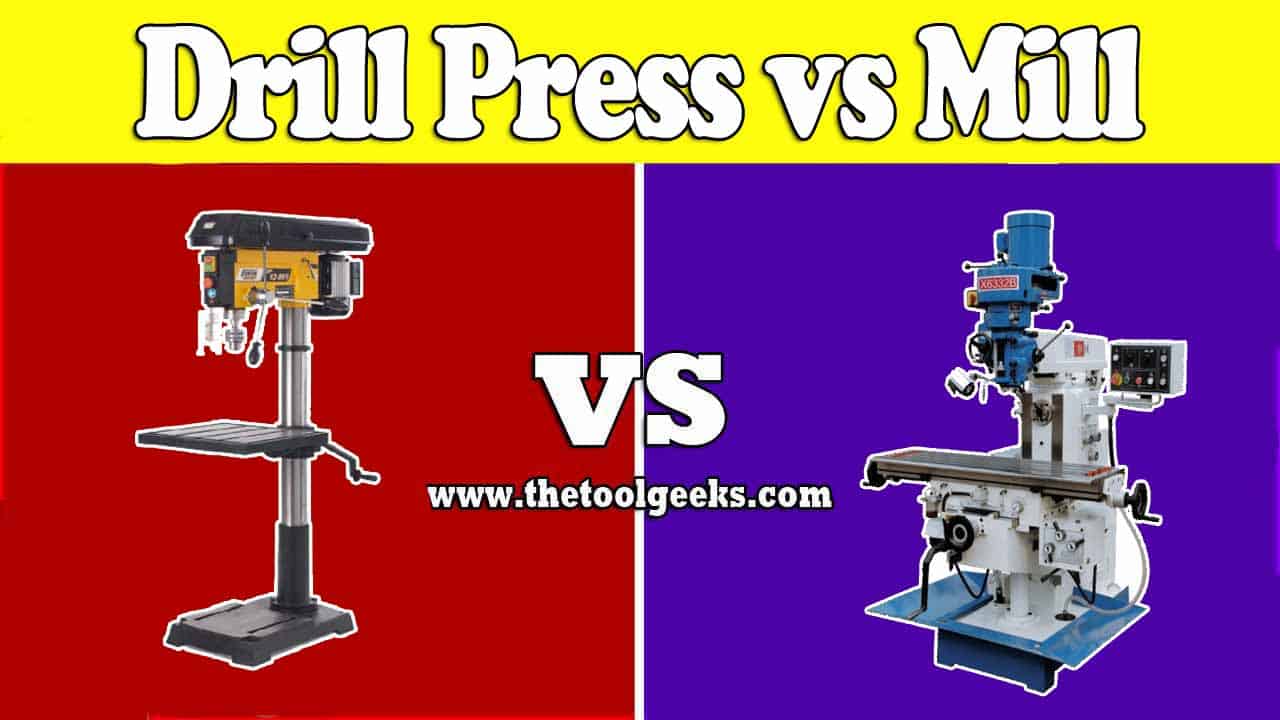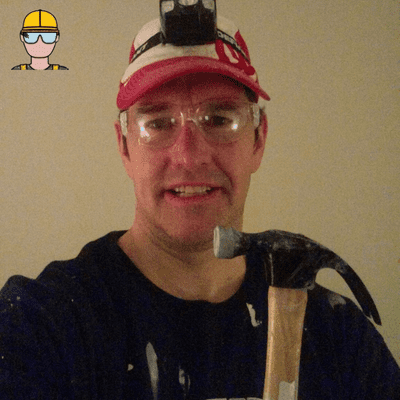Drill Press Vs Mill (4 Differences Explained)
TheToolGeeks.com is a participant in the Amazon Services LLC Associates Program and other affiliate advertising programs. We may earn from qualifying purchases. (Learn More).
Drill press and milling machine are one of the most fundamental machines when it comes to working in a mechanical workshop. Both machines are used primarily to cut metals and perform cutting operations like drilling, boring, reaming, grinding and surfacing, etc.
But the working principles are quite different for a drill press and a milling machine. Getting the right equipment is the first step to getting desired outcomes with accuracy but in the case of milling and a drill press, many people stay confused that which one they should buy first?
The post will throw light on the differences between drill press vs mill so you get a clear idea of which one will suit your needs at best.
Let’s talk about drill press first.
What Is a Drill Press and What Are Its Uses?
The drill press is mainly used to cut round holes in solid materials like metals, wood, and plastics, etc. Drill bits of varying diameter can be used to cut holes in different sizes. Don’t think of drill presses for just cutting holes through a solid material.
You can mount various rotating tools like sanding drums or honing wheels to perform different operations like cutting a solid workpiece and grinding. But majorly, drill bits are used to perform operations like drilling, reaming, and boring.
The drill press is electrically driven with the help of a motor and a step pulley system. Its speed can be controlled either with the help of a variable speed motor which mostly comes in new drill press machines or manually adjusting the step pulley system.
The drill press use drill chucks to hold the drill bit and move it up and down with the help of a feed lever. The workpiece is held manually on the bed or it can be fastened with the help of a vice or clamps.
One thing to be sure of is that the cutting tool moves only vertically when we talk about drill press. In the very same way, the worktable can also be moved up and down manually to adjust the height of the worktable with respect to the drill bit. This does mean that the drill press facilitates any cutting operation only along the Z-Axis.
Related Read — Best Drill Press
What Is a Milling Machine and What Are Its Uses?
The milling machine uses milling cutters to remove the material from metals. Milling machines are usually used to cut flat surfaces but that’s not all about them. They can be used to cut irregular surfaces, facing the periphery of the workpiece, cut slots on it, make gears steps, or they can be used to perform operations like drilling, reaming, boring and threading, etc. They are multi-functional machines.
The milling machine is much versatile when it comes to handling workpieces and milling cutters. A spindle is used to hold and drive the milling cutter.
The spindle is powered by an electric motor and its RPM is controlled with the help of a gear train. The workpiece is clamped onto the work table and fed past to the revolving mill cutter mounted on spindle or arbor in case of vertical and horizontal milling machine respectively.
The most important feature of the mill is its power feed mechanism which enables it to perform cutting vertically (up & down), horizontally (left and right), and in the transverse direction (in & out). The workpiece can move along X, Y and Z-Axis.
Drill Press vs Mill: Head to Head
Drill press and milling machine differ from each other in many aspects regarding their working principle, structure and activities performed.
At first, the working principles of both machines are different by 180 degrees. A drill press translates only vertical motion (up & down) while a milling machine allows its workpiece to move in vertical, horizontal (left & right), and transverse (in & out) direction as well.
The structure of the body, tools & feed mechanism, and required skill set to operate both machines are quite different from each other.
But that’s not all about it. There is much more to know about these two machines if you are planning to get one for your workshop or production floor.
Related Read — Drilling vs Milling
Axis of Motion and Workpiece
The relative motion of the tool or cutter with respect to the workpiece is the major difference between a drill press and a milling machine. A drill press is limited to only up and down motion (Z-Axis). It can cut holes into the workpiece but it is unable to cut the faces of a workpiece. So work output is limited.
While a milling machine translates its motion in the X, Y, and Z-axis which helps it to cut faces, angular peripheries of the workpiece, and manufacture complex geometries as well.
Accuracy
Accuracy is the desired outcome of any machinist and that’s exactly what a milling machine provides. It produces more accurate and precise outcomes because the workpiece can be moved in different directions with high-level controls and helps the worker to get the desired results.
On the contrary, the workpiece is manually controlled on a drill press which produces errors in the outcomes. Even the use of jig and fixture on a drill press, won’t get as much accuracy as a milling machine does.
Related Read — Brushless vs Brushed Drills?
Size and Price
When it comes to layout constraints of a workshop, it is always easy to adjust a drill machine as compared to a milling machine because of its compact size and lightweight.
Furthermore, the bed is usually round in shape in case of a drill press and remains fixed at its place when drilling is performed. But in a milling machine, Bed is usually a rectangular one and can move in the X, Y and, Z direction when the cutting operation is being performed.
Milling machines are heavier, come with additional features, and more accuracy so they are much more expensive than a drill press machine.
Related Read — How to Drill Through Bricks?
CNC Controls and Types
Milling machines are more up-to-date and come in different types especially with the addition of CNC controls to make the process more accurate, fast, and precise. While drill presses still come into the market with less variety and almost no CNC controls.
Which One Should You Buy the Drill Press or the Mill?
Both milling and drill press machines add great value in the mechanical workshop if you are planning to set up one or improve the existing one but the question is which one will suit you more if you are planning to purchase only one of these? That depends majorly on the following factors;
Nature of the Work Performed
If you are planning to cut metals, wood, and plastics on the same machine then a drill press is the best option available as milling cutters are suitable to cut only metals.
But more important question is that what type of operations you want to perform. If you want to just make holes of different sizes or grind or cut the material in just one direction then a drill press will serve the purpose but if you want to cat phases of a workpiece or work on complex geometries then a milling machine is the far better option.
Related Read — Drill vs Dremel
Your Skillset
Milling machines are tough to operate as compared to the drill press and it becomes even more technical when you use a CNC milling machine, so your present skill level is important here.
Your Budget
Due to value-added features like feed mechanism and more flexibility with cutting operations, milling machines are quite expensive as compared to the drill press machine. So if you have a controlled budget, consider buying a drill press.
The Workspace
Milling machines are big in size and heavy than drill press machines. They can’t be moved easily as well. So, if you have a limited workspace and limited scope of work, get a drill press. And if you have a big set up and you need to buy a more versatile machine then don’t hesitate to buy a milling machine.
Amazon and the Amazon logo are trademarks of Amazon.com, Inc, or its affiliates.

